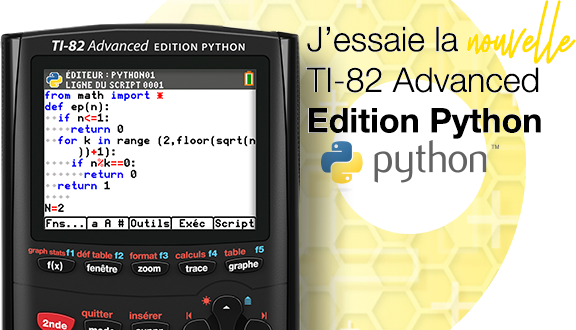modul 1 DBMS
DownloadTélécharger
Actions
Vote :
ScreenshotAperçu

Informations
Catégorie :Category: nCreator TI-Nspire
Auteur Author: SPITZER2001
Type : Classeur 3.0.1
Page(s) : 1
Taille Size: 2.41 Ko KB
Mis en ligne Uploaded: 20/11/2024 - 17:27:00
Uploadeur Uploader: SPITZER2001 (Profil)
Téléchargements Downloads: 7
Visibilité Visibility: Archive publique
Shortlink : https://tipla.net/a4329853
Type : Classeur 3.0.1
Page(s) : 1
Taille Size: 2.41 Ko KB
Mis en ligne Uploaded: 20/11/2024 - 17:27:00
Uploadeur Uploader: SPITZER2001 (Profil)
Téléchargements Downloads: 7
Visibilité Visibility: Archive publique
Shortlink : https://tipla.net/a4329853
Description
Fichier Nspire généré sur TI-Planet.org.
Compatible OS 3.0 et ultérieurs.
<<
Module 1: Introduction to DBMS Definition of DBMS A Database Management System (DBMS) is a software system that allows users and applications to interact with databases. It facilitates the creation, retrieval, updating, and management of data while ensuring its security and integrity. Key Features of DBMS Data Security: Prevents unauthorized access and ensures that only authorized users can perform operations on the data. Data Abstraction: Simplifies the complexity of data storage by providing users with a logical view instead of physical details. Concurrency Control: Manages simultaneous access to the database to prevent conflicts and maintain consistency. Transaction Logs: Maintains a record of all transactions, allowing recovery from failures and ensuring auditability. Types of Databases Flat File Database: Stores data in plain files with no relational structure, often used for small, simple systems. Relational Database: Organizes data in tables with predefined relationships (e.g., MySQL, PostgreSQL). Hierarchical Database: Represents data in a tree structure with parent-child relationships (e.g., IBM IMS). NoSQL Database: Designed to handle semi-structured and unstructured data, offering flexible schemas (e.g., MongoDB). ACID Properties Atomicity: Ensures that a transaction is fully completed or fully undone. Consistency: Guarantees that a transaction will bring the database from one valid state to another. Isolation: Ensures that transactions do not interfere with each other when executed simultaneously. Durability: Ensures that the results of a completed transaction are permanently saved, even in case of system failures. DBMS Architectures Single-Tier Architecture: Both the application and database reside on the same system, suitable for standalone applications. Two-Tier Architecture: The application directly communicates with the database server, commonly used in client-server environments. Three-Tier Architecture Introduces an intermediate application layer between the user interface and the database for added modularity and scalability. Transaction Management Begin Transaction: Initiates a transaction, marking a starting point for operations. Commit: Saves all changes made during the transaction permanently to the database. Rollback: Undoes changes made during the transaction, returning the database to its previous state. Made with nCreator - tiplanet.org
>>
Compatible OS 3.0 et ultérieurs.
<<
Module 1: Introduction to DBMS Definition of DBMS A Database Management System (DBMS) is a software system that allows users and applications to interact with databases. It facilitates the creation, retrieval, updating, and management of data while ensuring its security and integrity. Key Features of DBMS Data Security: Prevents unauthorized access and ensures that only authorized users can perform operations on the data. Data Abstraction: Simplifies the complexity of data storage by providing users with a logical view instead of physical details. Concurrency Control: Manages simultaneous access to the database to prevent conflicts and maintain consistency. Transaction Logs: Maintains a record of all transactions, allowing recovery from failures and ensuring auditability. Types of Databases Flat File Database: Stores data in plain files with no relational structure, often used for small, simple systems. Relational Database: Organizes data in tables with predefined relationships (e.g., MySQL, PostgreSQL). Hierarchical Database: Represents data in a tree structure with parent-child relationships (e.g., IBM IMS). NoSQL Database: Designed to handle semi-structured and unstructured data, offering flexible schemas (e.g., MongoDB). ACID Properties Atomicity: Ensures that a transaction is fully completed or fully undone. Consistency: Guarantees that a transaction will bring the database from one valid state to another. Isolation: Ensures that transactions do not interfere with each other when executed simultaneously. Durability: Ensures that the results of a completed transaction are permanently saved, even in case of system failures. DBMS Architectures Single-Tier Architecture: Both the application and database reside on the same system, suitable for standalone applications. Two-Tier Architecture: The application directly communicates with the database server, commonly used in client-server environments. Three-Tier Architecture Introduces an intermediate application layer between the user interface and the database for added modularity and scalability. Transaction Management Begin Transaction: Initiates a transaction, marking a starting point for operations. Commit: Saves all changes made during the transaction permanently to the database. Rollback: Undoes changes made during the transaction, returning the database to its previous state. Made with nCreator - tiplanet.org
>>












